
I'm super excited to share our new paper on Norwegian lemming genomics just published in @pnas.org!! Read the paper here: www.pnas.org/doi/epub/10....
Summary ⬇️
@robvanbemmelen.bsky.social
Dad, birder, sound recorder, ecologist mainly studying (North Sea) seabirds, tracking terns, skuas and phalaropes.

I'm super excited to share our new paper on Norwegian lemming genomics just published in @pnas.org!! Read the paper here: www.pnas.org/doi/epub/10....
Summary ⬇️
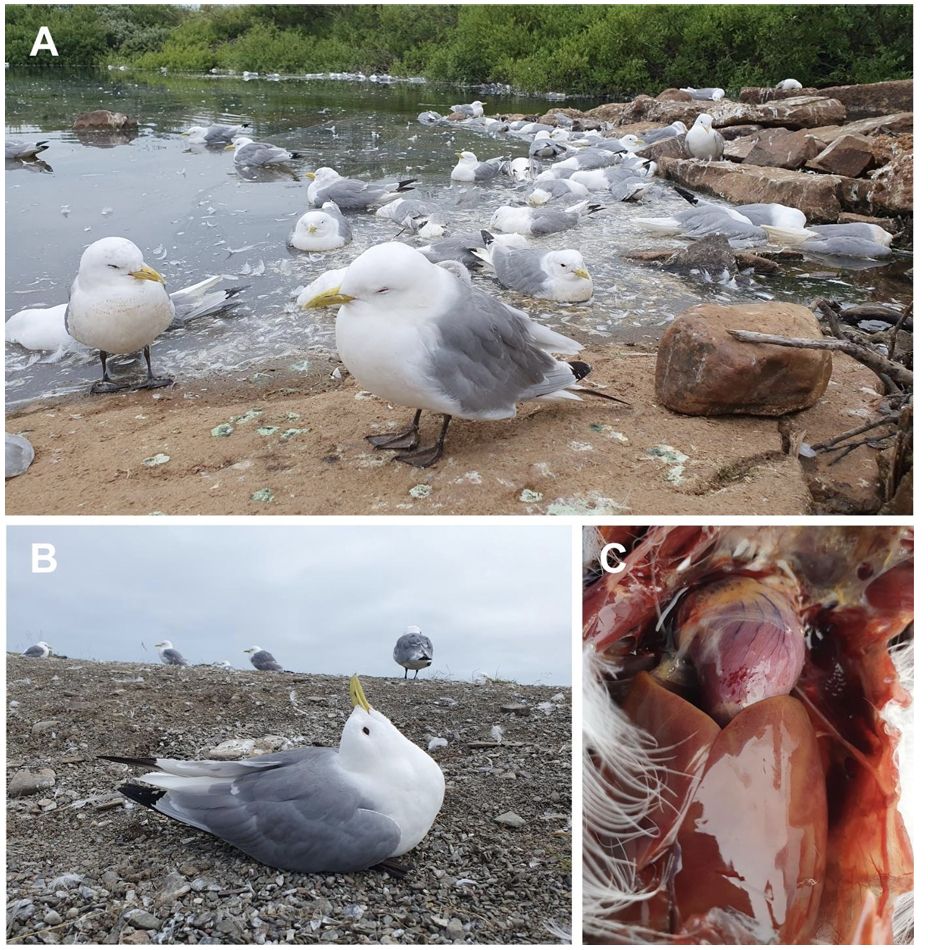
Mass mortality of Black-legged Kittiwakes, Norway, 2023: more than 15,000 birds dead, population reduction of 50%. genotype EA-2022-BB
👉 www.biorxiv.org/content/10.1...
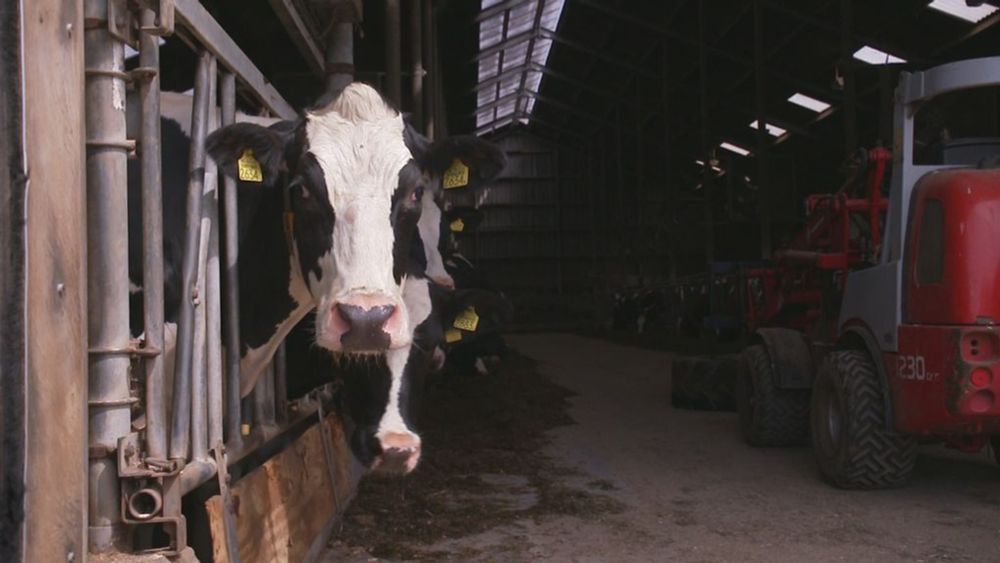
Zoals verwacht komt de Ministeriële commissie Economie en Natuurherstel niet met een oplossing voor de stikstofproblematiek. Het kabinet kiest ervoor om de natuur verder te laten verslechteren en ondernemers nog eens 10 jaar in onzekerheid te laten zitten. nos.nl/artikel/2564...
24.04.2025 05:45 — 👍 140 🔁 86 💬 11 📌 10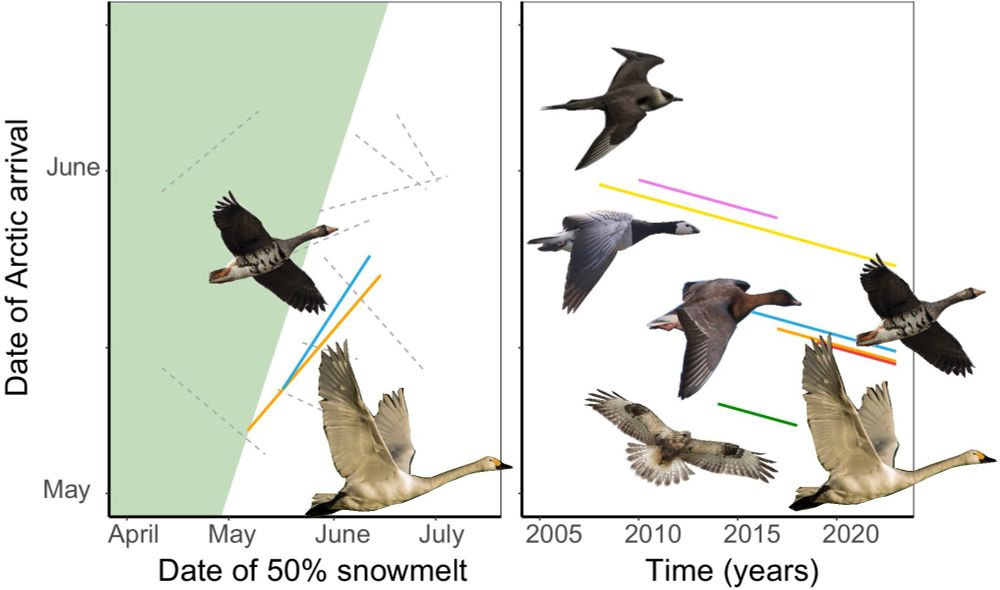
🚨Publication in @globalchangebio.bsky.social by Lameris et al.
→ Early snowmelt = earlier egg-laying, but only 2 waterfowl arrived earlier.
→ Over time, most arrived earlier—regardless of snowmelt or laying.
→ Why? Faster migration: shorter stopovers = earlier arrival.
🔗 doi.org/10.1111/gcb....
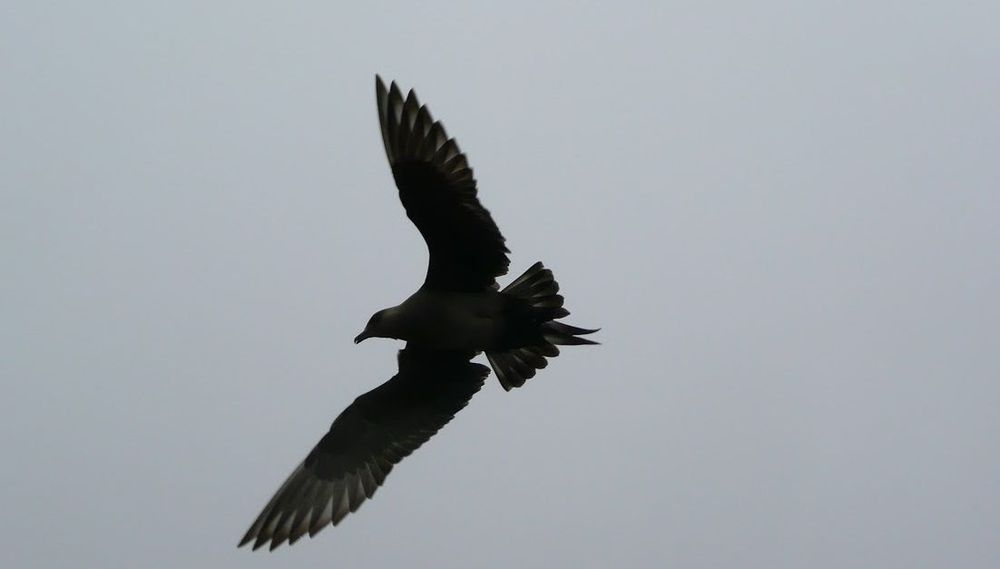
NEW PAPER in #ornithology shows that the survival of migratory #seabirds (Arctic skuas) has decreased in the last decades, but is not related to large-scale ocean indices: www.int-res.com/abstracts/me...
12.03.2025 16:44 — 👍 18 🔁 10 💬 0 📌 0And: thin black vertical line along the bill base. Nice bird!
11.03.2025 19:31 — 👍 0 🔁 0 💬 0 📌 0
Working on avian vagrancy? @pauldufour80.bsky.social and myself are organising a symposium at the EOU Conference 2025 at Bangor University, Wales (UK) from 18-22 August 2025 #Ornithology please submit abstracts to: auth.oxfordabstracts.com?redirect=/st... 🪶🌍
10.03.2025 11:29 — 👍 31 🔁 16 💬 1 📌 1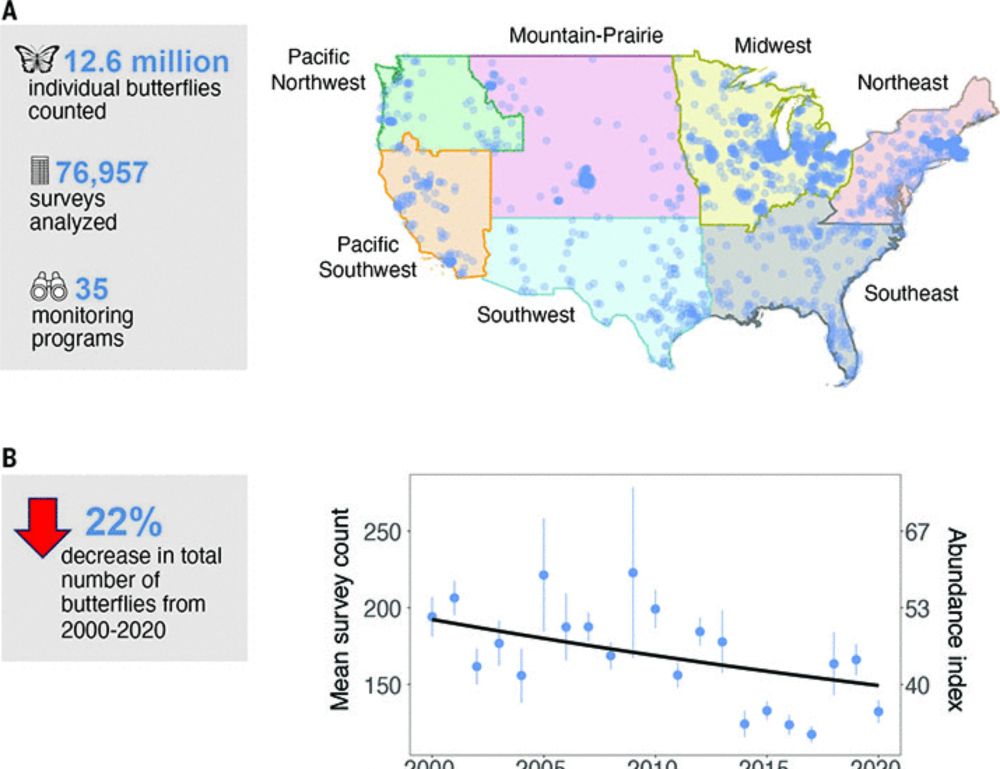
Our paper is out, and it is distressing.
Rapid butterfly declines across the United States during the 21st century | Science www.science.org/doi/10.1126/...
...past. These visited platforms could be prioritized when surveying platforms for breeding kittiwakes. 6/6 @waardenburgeco.bsky.social @sovonvogels.bsky.social
05.03.2025 10:29 — 👍 2 🔁 0 💬 0 📌 0...in June in the Dutch sector of the North Sea, based on aerial surveys. It remains unclear what part of these breed on platforms. Our tagged kittiwakes visited several (up to 7) other platforms, including platforms where breeding has been observed in the... 5/6
05.03.2025 10:29 — 👍 2 🔁 0 💬 1 📌 0...habitat for the species -- our only breeding kittiwakes are those on platforms. The first report of breeding on platforms stems from 2000. There is very scant information on breeding numbers since then. For the past six years, up to several 10 000s kittiwakes were estimated to be present... 4/6
05.03.2025 10:29 — 👍 2 🔁 0 💬 1 📌 0
...changed temporally. There was a sudden drop in distances about a week after tagging, which we interpreted as the start of the chick-phase. Then, distances increased during chick-rearing and dropped again during the post-fledging period. In the Netherlands, we don't have natural breeding... 3/6
05.03.2025 10:29 — 👍 3 🔁 0 💬 1 📌 0...colonies of the same size. We suggest this is because they can venture in all directions and therefore have reduced density-dependence around the colony compared to coastal colonies that have less access to sea area. With data well into September, we could show how max trip distances... 2/6
05.03.2025 10:29 — 👍 3 🔁 0 💬 1 📌 0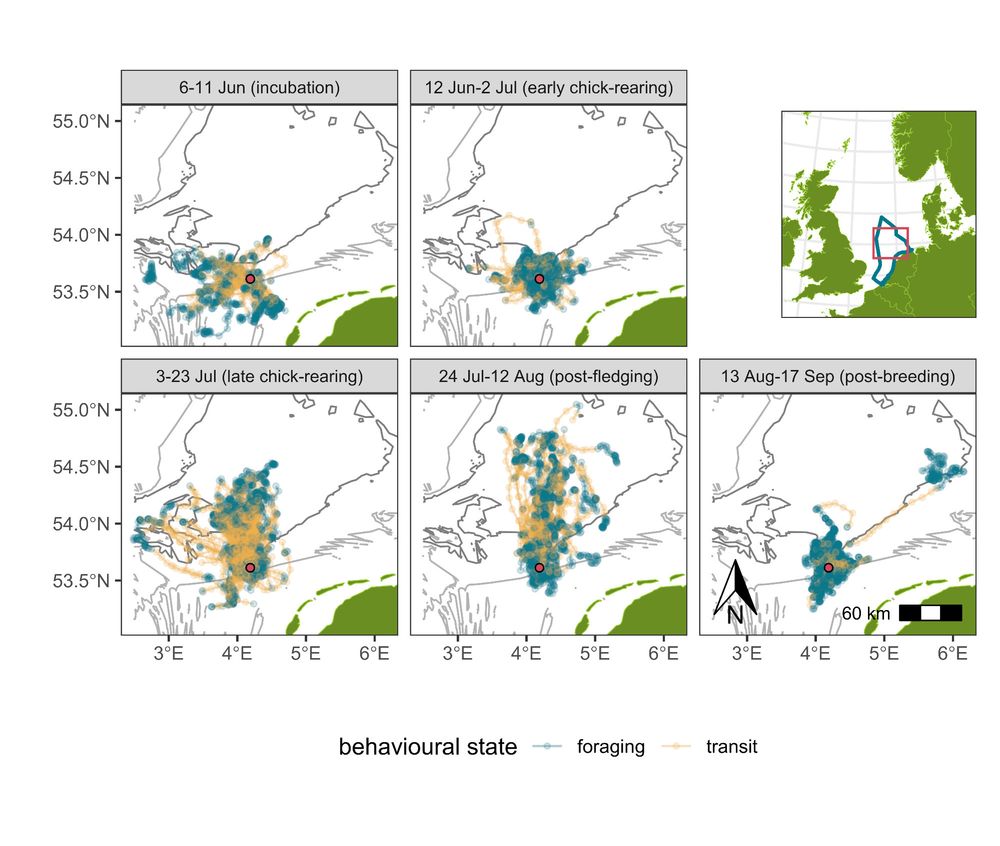

New #OA paper in the #seabird journal (@theseabirdgroup.bsky.social)! We GPS-tracked Black-legged #Kittiwakes breeding on an offshore platform in the Dutch sector of the North Sea. In short, we show that they have a short foraging range compared to coastal... 1/6
www.seabirdgroup.org.uk/seabird-37
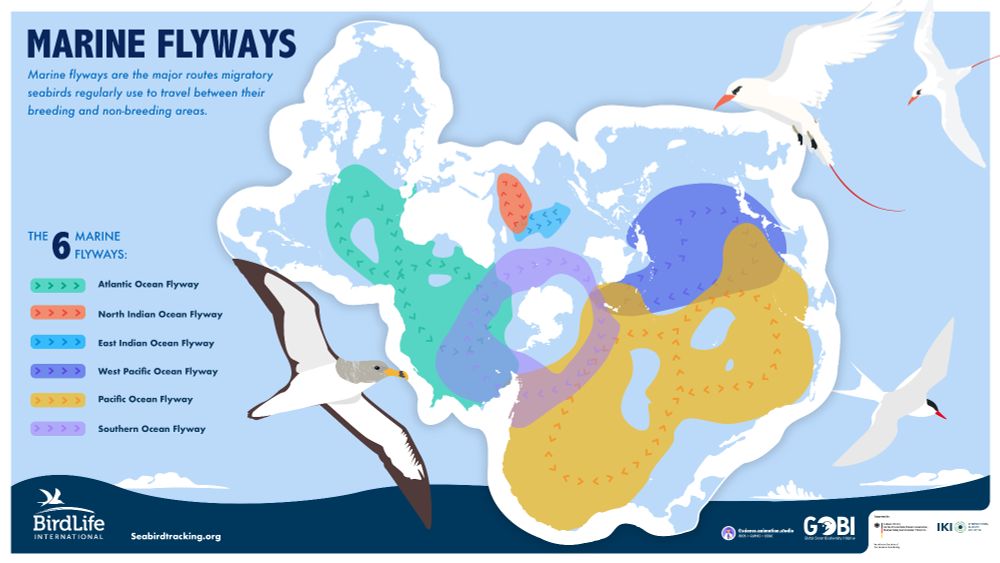
Infographic map showing the six marine flyways (Atlantic Ocean Flyway, North Indian Ocean Flyway, East Indian Ocean Flyway, West Pacific Ocean Flyway, Pacific Ocean Flyway, Southern Ocean Flyway) in a spilhaus projection, and the general direction of travel by migratory seabirds
🚨NEW OPEN ACCESS PAPER🚨details how we delineated six #MarineFlyways using #seabird #tracking data & novel analytical methods
➡️ doi.org/10.1111/geb.70004
🧪 #ornithology #migration #BLScience
@birdlifeglobal.bsky.social
We are grateful to GOBI @iki-germany.bsky.social for funding the project
🧵1/5
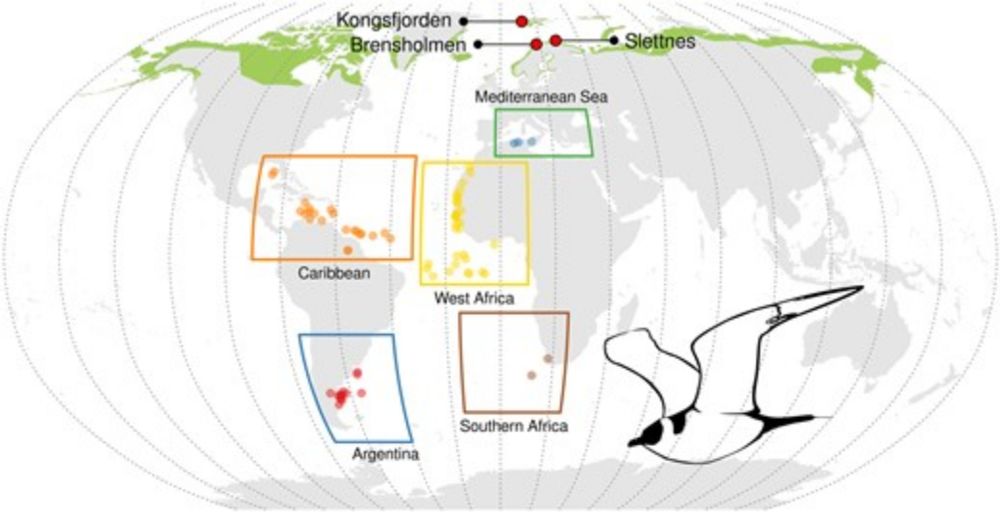
Bustnes et al. The pollution fast-track to the Arctic: how southern wintering areas contribute to organochlorine loads in a migrant seabird breeding in the Arctic academic.oup.com/etc/advance-... #ornithology #teamskua
17.02.2025 08:22 — 👍 14 🔁 6 💬 1 📌 0
🚨NEW OPEN ACCESS PAPER🚨details how we delineated six #MarineFlyways applying a novel approach onto #seabird #tracking data: doi.org/10.1111/geb.70004 🧪
See the short animation via: www.seabirdtracking.org/case-studies... explaining how the marine flyways can be a framework to support #conservation
... positively impacting the performance of the parents in the subsequent breeding season, leading to improved young survival prospects. 3/3
14.02.2025 15:49 — 👍 0 🔁 0 💬 0 📌 0Interestingly, models also indicated an increased young survival following an El Niño winter. We suggest this time-lagged effect reflects downstream propagation of environmental conditions, particularly food availability, or a potential carry-over effect of El Niño conditions... 2/3
14.02.2025 15:49 — 👍 0 🔁 0 💬 1 📌 0
The second paper, led by Kat Snell and Ines dos Santos (at @mpi-animalbehav.bsky.social), is about Arctic Skuas breeding at the Faroe Islands. Here, analysis of 24 years of ringing data suggests strong declines in the survival rates of both adults and juveniles. 1/3 doi.org/10.3354/meps...
14.02.2025 15:49 — 👍 1 🔁 0 💬 1 📌 0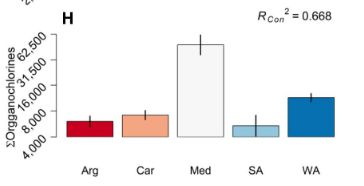
... in wintering areas, with birds from single breeding sites wintering in areas across the Atlantic (see movementecologyjournal.biomedcentral.com/articles/10....). We found that which and how much organochlorine contaminants are present in Arctic Skua blood depends on the wintering area. 2/2
14.02.2025 15:44 — 👍 0 🔁 0 💬 0 📌 0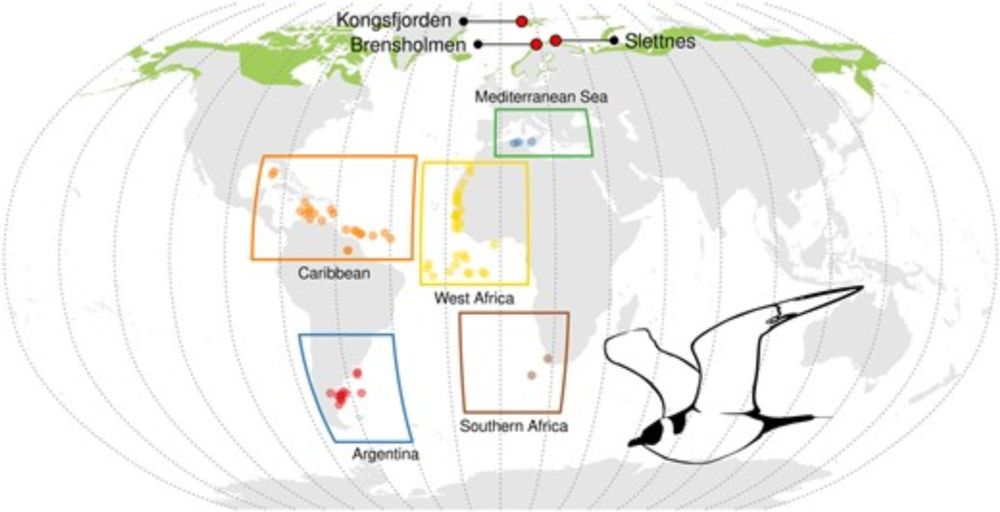
Happy to share two new papers on Arctic Skuas where I contributed. First: a paper led by Jan Ove Bustnes (@ninanatureresearch.bsky.social) on pollutants found in the blood of Arctic Skuas breeding on Svalbard and at Slettnes. Arctic Skuas show large variation...
academic.oup.com/etc/advance-... 1/2

Our new paper, based on data from 1,705 studies, shows that pesticides are toxic to organisms they are not intended to harm, including fungi, microbes, plants, insects, & vertebrates such as ourselves. Questions the wisdom of applying over 3 million tonnes of them every year...
13.02.2025 16:14 — 👍 492 🔁 256 💬 7 📌 28Peatlands occupy just 3% of all land but contain more carbon than all of the world’s forests.
Often overlooked: typically flat, wet, often inaccessible, not always picturesque & all the carbon they hold is hiding below the surface.
80% of the UK bogs are degraded by draining, overgrazing, burning.
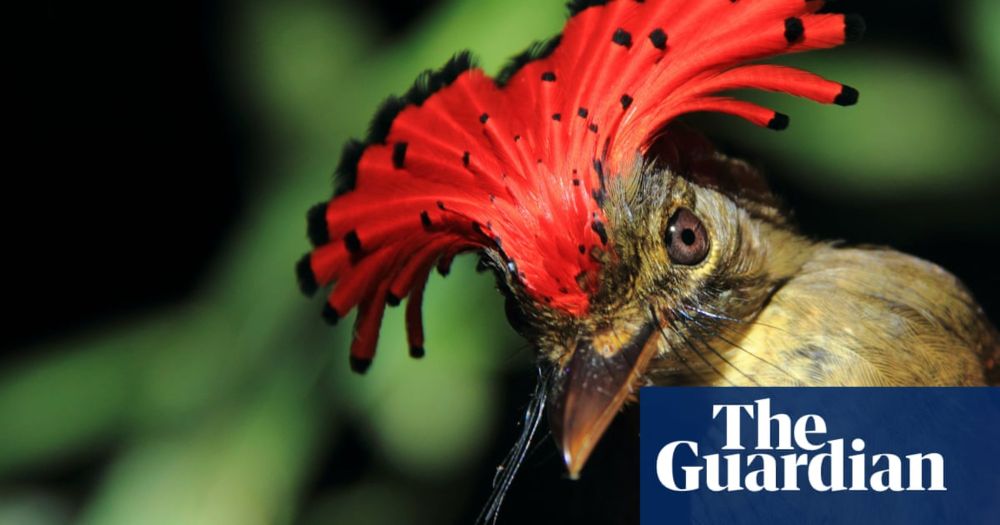
Sobering. When I talk to people about long-term bird population declines in N America, I mention that the main cause is habitat loss, not climate change - yet. But new research shows that climate change is causing bird declines even in otherwise pristine places. www.theguardian.com/environment/...
30.01.2025 17:02 — 👍 53 🔁 27 💬 1 📌 2@jeroen-reneerkens.bsky.social
28.01.2025 18:00 — 👍 1 🔁 0 💬 1 📌 0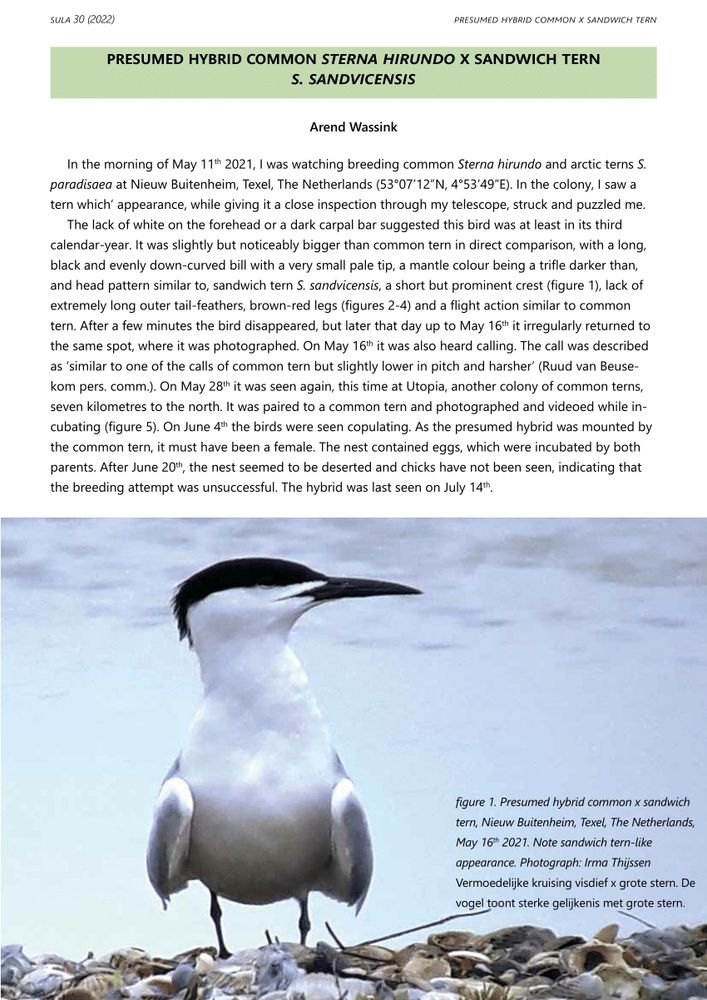
Interesting paper, but a pity that it missed this intriguing example of an intergeneric hybrid between Sandwich and Common Tern: www.researchgate.net/publication/...
16.01.2025 13:06 — 👍 1 🔁 0 💬 0 📌 0A thread on quite how incredible the Texel Spectacled Eider record is, given that almost the entire world population (~250K) winters together around 62°00'N, 173°00'W in polynyas - gaps in the sea ice in the Bering Sea, like the ones below👇 🧵#Ornithology 1/
14.01.2025 16:18 — 👍 111 🔁 21 💬 6 📌 3Seabird 36 is now live! Head to this link to take a read -> seabirdgroup.org.uk/seabird-36
08.01.2025 14:30 — 👍 13 🔁 5 💬 0 📌 0